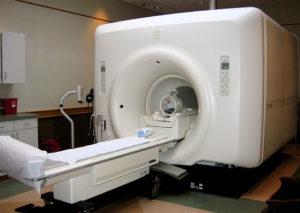There was an interesting – and troubling – study some years ago which found that after 20 years, your average mercury amalgam “silver” filling can lose up to 95% of its mercury content.
While the lead author assured that “what’s left is in a form unlikely to be toxic in the body,” he and his team didn’t appear to ask one critical question: Where did all of that mercury go?
We know from other research, of course, that while some of may be excreted, plenty is not. It’s inhaled. It’s methylated. It accumulates in fatty organs such as the brain, becoming an ongoing toxic burden. No level of exposure to this potent neurotoxin can be considered “safe.”
How does the mercury escape? Much of it happens simply through the pressure and abrasion of chewing, swallowing, and brushing. Galvanic currents, caused by the presence of different metals in the mouth, can also pull out mercury. So can cleaning or bleaching with hydrogen peroxide.
In general, it’s been found that a single amalgam filling can release an average of 10 micrograms of mercury every day.
Yet another culprit in mercury release is EMF radiation. One 2016 study found that “WiFi devices can increase mercury release from amalgam restorations.” A 2017 study similarly found that microleakage from amalgam was “significantly higher” among filled teeth exposed to WiFi radiation. Other research has found that exposure to cell phones and MRI can accelerate mercury release.
 Now comes a new generation of high-powered MRI scanners that seem to cause even greater mercury release from amalgam fillings.
Now comes a new generation of high-powered MRI scanners that seem to cause even greater mercury release from amalgam fillings.
For the study, just published in the journal Radiology, researchers filled 60 extracted teeth with amalgam and then either scanned samples with either conventional (1.5-T) or ultra-high-strength (7-T) MRI scans, or placed in a control group. Afterwards, the teeth were put into artificial saliva for 24 hours, and the saliva was then analyzed for mercury.
Mercury levels in the 7-T group were about four times higher than those from the 1.5-T and control groups.
“In our study, we found very high values of mercury after ultra-high-field MRI,” [lead author Selmi] Yilmaz said. “This is possibly caused by phase change in amalgam material or by formation of microcircuits, which leads to electrochemical corrosion, induced by the magnetic field.”
That news of this research made headlines in mainstream media around the world – this story from UPI is typical – gives us hope that more people will start to pay attention to the real health hazards that mercury amalgam fillings pose.
Yet we’re not so naïve to think that this study will put any brakes on the continued development and use of such imaging technology. In our tech-adoring society, we have a strong tendency to embrace the benefits of each and every new device without ever giving much thought to potential costs. We see this now in the rush to G5 cell phone technology and its accompanying increase in EMF exposure even as scientists are still just beginning to grasp its effects on human health.
Dr. Axe sums up the situation pointedly:
For decades, Americans were told things like cigarette smoke, DDT, Monsanto and other pesticides were safe, when we now know they’re linked to cancer and other health problems. So are we going to do it again — on a massive scale — with wireless without even properly studying human health impacts. (Or considering possibly safer ways of doing things?)
Every technology, like every dental or medical treatment, has both benefits and risks. When we decide the benefits are worth it, we should at least be able to do what we can to minimize risk or offset its effects.
But to do so, we need to understand those risks. That’s why studies like this new MRI one are so important. The information they deliver can help us make more informed choices about how we use the technology we’ve create – or create safer options.
Meantime, what do we do while we wait for the next study? How about not placing any more mercury fillings at all? How about NOT leaving that decision to the dentist who “hasn’t seen any problems.”
Please, let’s not put any more mercury in people’s mouths. And if they are going to be removed, be sure to have mercury fillings removed by a dentist who follows the strictest protocols. It DOES
make a difference
MRI image by liz west, via Flickr